In pictures: Arctic convoys
- Published
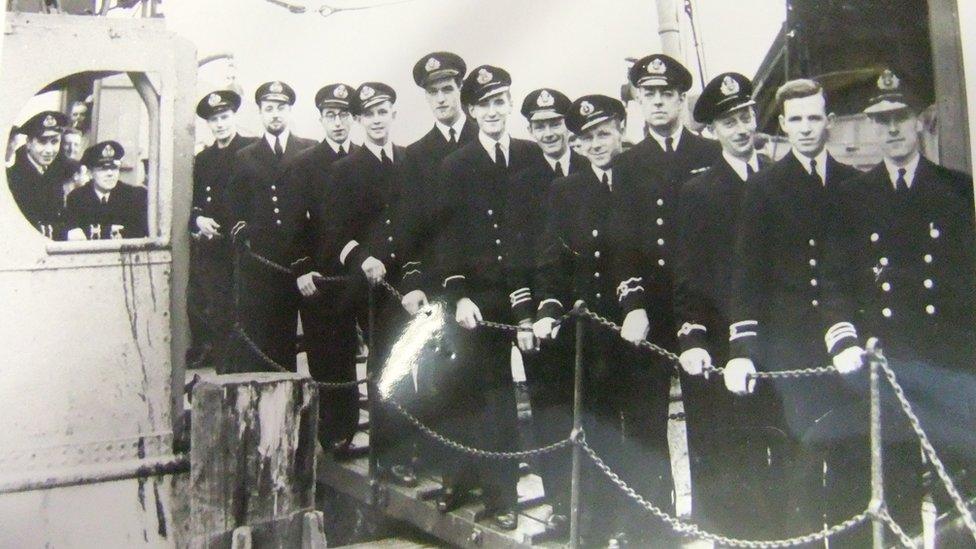
During World War II, convoys of merchant and military ships provided an essential lifeline to the Russians in their fight against Germany. A new exhibition at the National War Museum, located in Edinburgh Castle, sheds new light on the campaign. This photo shows the crew of the SS Rathlin, the most successful rescue ship during the Arctic convoys.
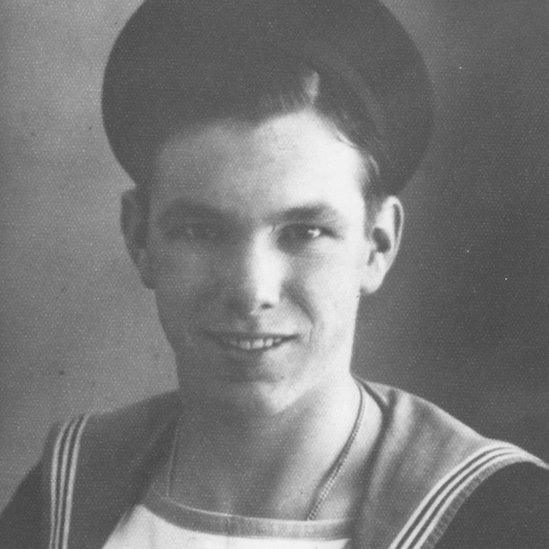
After Germany invaded the Soviet Union (Russia) on 22 June 1941 Stalin demanded help and the western Allies provided supplies. The most direct route was by sea, around northern Norway to the Soviet ports of Murmansk and Archangel. Sailing from Scotland, Iceland and North America, the Arctic convoys carried vital supplies. Ken Reith was a young signal boy on-board light anti-aircraft cruiser HMS Diadem.
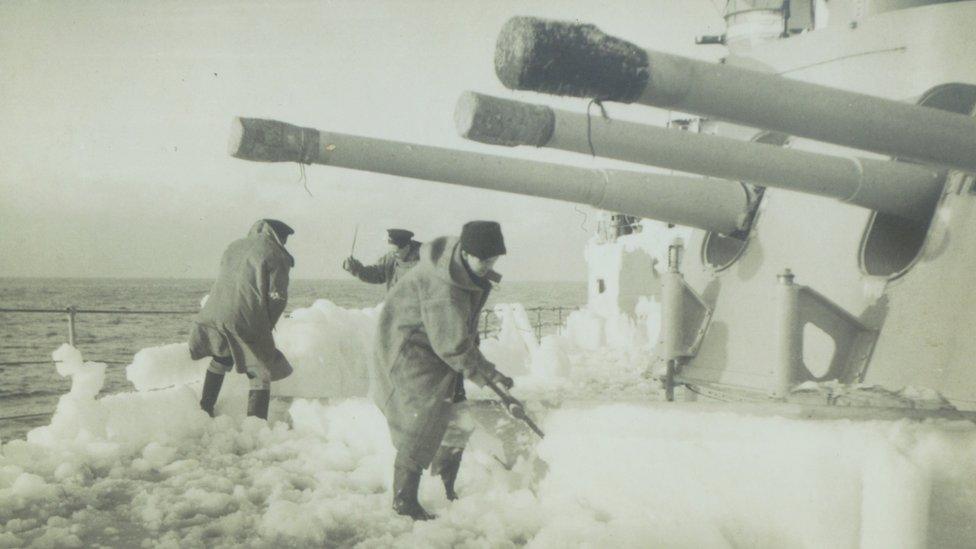
As well as facing the constant possibility of attack from German U-boats, the men who sailed on these ships faced some of the toughest weather conditions of the war. Ice was a significant problem for the ship’s crew since its weight could capsize the vessel if it was not chipped off.
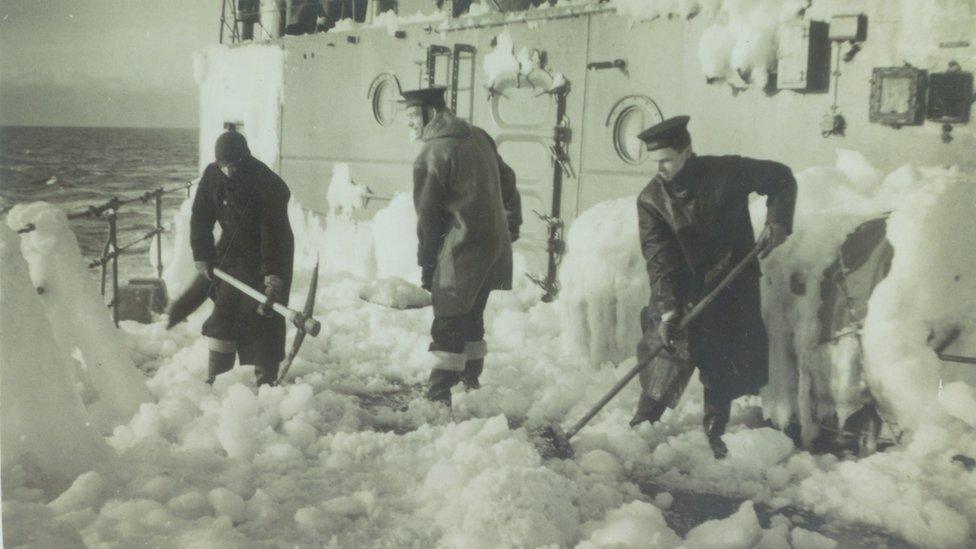
Conditions were among the worst faced by any allied sailors. The loss rate for ships was higher than any other allied convoy route.
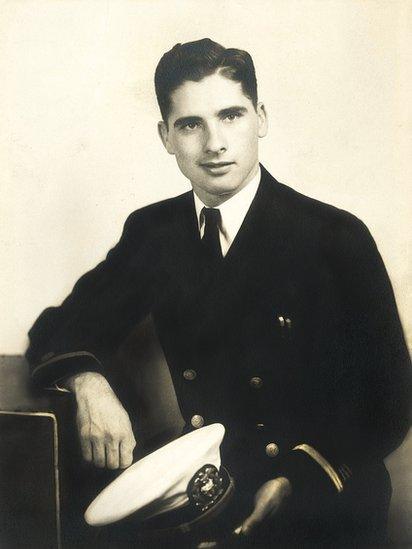
"Spud" Campbell served as a young man on the SS Henry Bacon in the Russian Arctic Convoys.
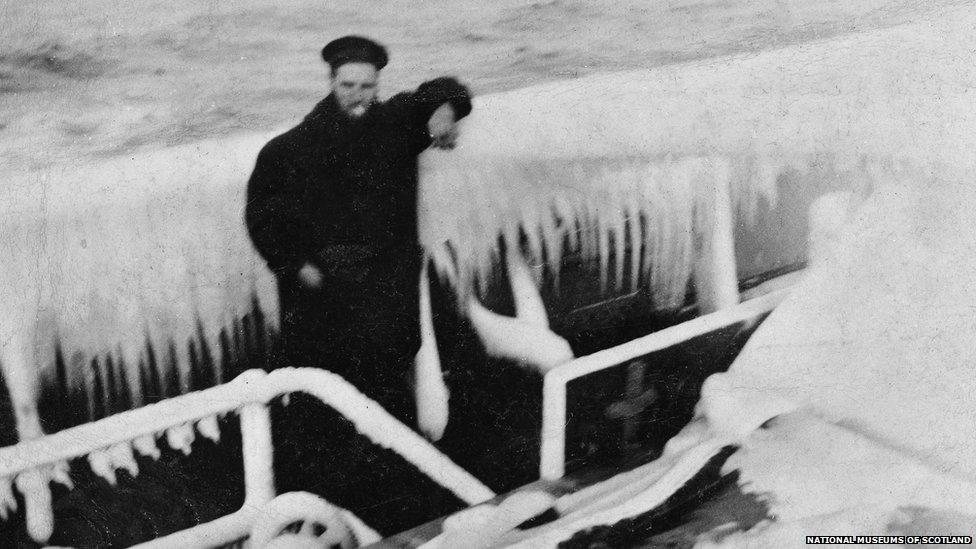
A sailor posing for the camera on-board a ship heavily laden with ice. There were 78 convoys between August 1941 and May 1945.
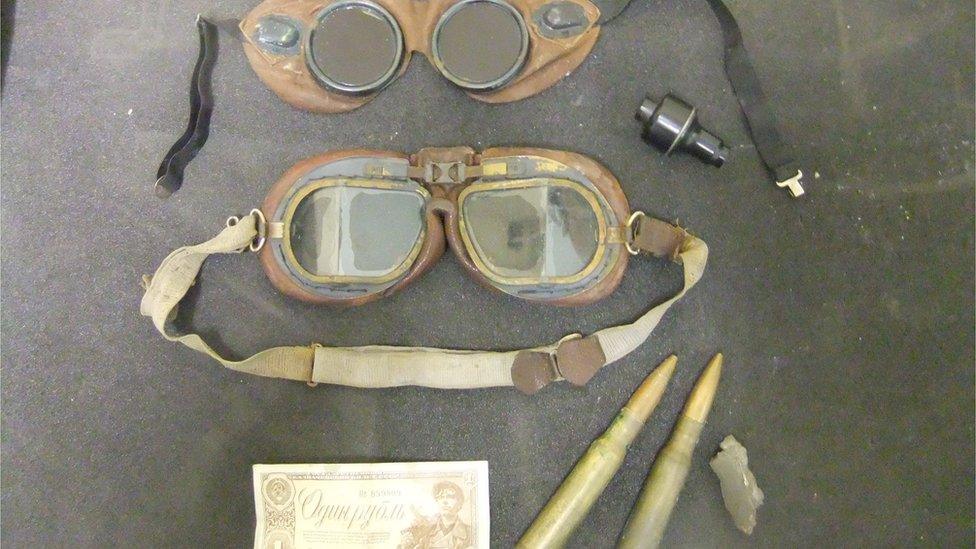
Night vision goggles worn by Sub-Lieutenant D Whittick, c1944. Red lens goggles were worn prior to night flights and were thought to help pilots see in the dark. Soviet bank note and Browning cartridges, c1944
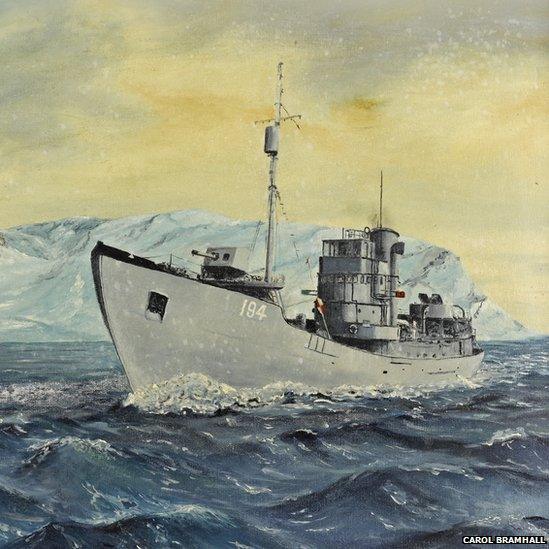
Painting of the armed trawler "Northern Gem". The trawler was involved in the famous PQ17 convoy. The merchant ships were attacked by U-boats and aircraft, and only 11 out of 34 reached Russia. In all, 153 merchant seamen died.

A packing label which reads: "Arrived safely – thanks to British Convoys". On the reverse the same message of thanks appears in different languages.